Their work is rooted in design, has a flavor of art and a profound touch of science. It’s a blend of different types of knowledge that brings forth new knowledge. Central to their approach is an open-ended and all-inclusive mindset. Western science is as legitimate as indigenous traditions. In their opinion all knowledge is complementary. Their work ranges from the absurd to the scientific, from the experimental to the groundbreaking. Mike Thompson and Susana Cámara Leret are the minds behind Thought Collider, an experimental, critical art-design research practice based in Amsterdam.
Often their materials of choice are both everyday and completely out of the ordinary. In their project Aqua Vita they used urine as a source of information. With Fatberg, an on-going collaboration between Mike and Arne Hendriks, they are building an island of fat, which should one day roam the oceans. And their latest project: The Institute for the Design of Tropical Disease attempts to create a space where other types of discussion related to tropical disease can take place - discussions that are more imaginative than dogmatic.
We recently talked with them about their practice, their latest project and their views on society and our senses.
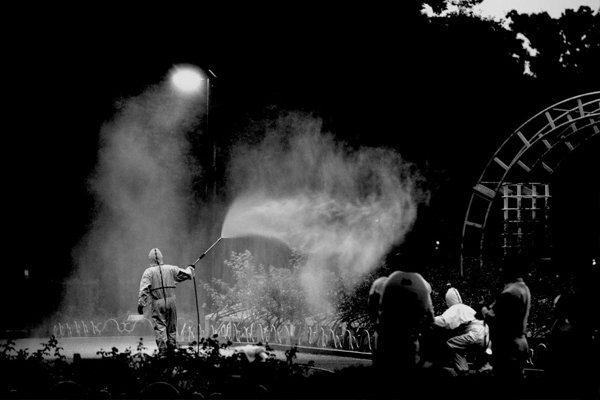 A worker sprays pesticide following an outbreak of the mosquito-borne Dengue fever
A worker sprays pesticide following an outbreak of the mosquito-borne Dengue fever
Can you briefly explain what your latest project The Institute for the Design of Tropical Disease is about and why it is valuable?
Susana: It started from a fascination with how we chemically communicate with other organisms, through smell and body odour for example. That inevitably led to looking at Mosquitoes and Malaria. We felt, however, that most of the discussions taking place in and around tropical disease were too pragmatic. They were directed at finding solutions, eradicating insects and preventing the transmission of the parasite to humans. We thought that, as designer and artists, it was more interesting to promote a space where another kind of dialogue could take place. So we created the virtual institute, to shift the discussion from the pragmatic to something more imaginative.
Mike: We noticed that an entomologist, so somebody who studies insects, is not necessarily talking to a researcher developing a new drug, who is not speaking to a medical historian, and so on. There is a vast amount of knowledge generated around this theme yet the focus seems to remain on eradication as a strategy. One of the aims of the virtual institute is to connect these disconnected networks.
We’re not so much speculating, but reflecting on present situations
Susana: We are triggered by the idea of colonization on various scales. For example, the way that a parasite colonizes a blood cell, to the way that drugs were developed and became colonization "tools" to reach parts of the world, which were previously inaccessible to, for example, Europeans. We are looking at the transfer of information through space, but also from one body to another, from a parasite to an insect to a human body.
Can you tell us something about the research theme DIY Quinine?
Mike: Quinine is an Alkaloid found in the bark of the Cinchona tree (originating from South America), and the first known suppressant of the Malaria parasite. Interestingly, its "discovery" by Europeans (the indigenous population of course used it first) led to the colonization of various parts of the globe previously inaccessible due to malaria. Eventually, the Dutch would monopolise the production of Quinine worldwide and it wasn’t until the Second World War, when the Japanese invaded Java, that synthetic variants went into mass production. The history of Cinchona is very speculative, with claims that there might be as many as 300 different variants of Cinchona, although now, as a result of genetic testing of samples within botanical collections, it's suggested there might be only as much as 10% of that number. This shows the craze surrounding its interest as a trade opportunity.
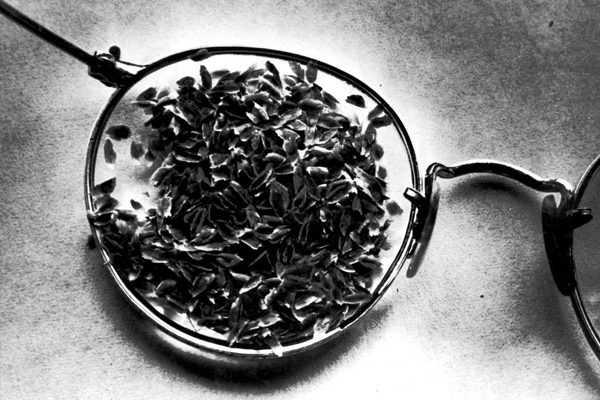 Cinchona seeds brought out of the Philippine islands before the Japanese invasion (1943)
Cinchona seeds brought out of the Philippine islands before the Japanese invasion (1943)
Susana: We began investigating the history of botanical manipulation, considering ways in which we have co-evolved with plants, for example through the effects that plant defenses, such as Quinine, have on our body. As a result, we became interested in the history of the Gin and Tonic, which is linked to that of Malaria. The myth goes that the British, setting up their own Cinchona plantations in India, invented the Gin and Tonic; as quinine has a very bitter taste, they camouflaged it by adding gin, lime and sugar. Bitters, such as quinine, also have an effect on the digestion of food in the body by triggering aversion. Therefore retracing the uses of Quinine, as an anti-Malarial drug, opens up a whole area of research, linked to culinary rituals, such as the use of bitters as medicinal drinks or aperitifs, leading to more contemporary, recreational uses.
This would shift the focus from eradicating insects to eradicating the perceived presence of humans.
What about Rain Rain Go Away!, another project of the Institute for the Design of Tropical Disease?
Mike: Collaborating with the Laboratory of Entomology at Wageningen University, we are exploring insect to human communication, looking at the molecules and compounds that act as attractants or repellants. We started to imagine that clouds of odours, may have the potential to cloak the presence of humans. This would shift the focus from eradicating insects, as has been the trend, to eradicating the perceived presence of humans.
Susana: It’s an open premise. We were triggered by the notion of "white smell", which is essentially the same concept as white noise, but in the realm of odours. A blend that would effectively neutralize all odours. In this way we are working with air as a material. Air is actually full of life and not an empty void. It’s a space where life is forming.
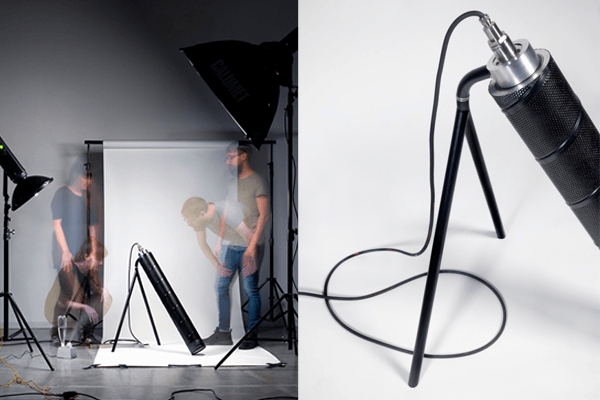 Artefact Rain Rain Go Away
Artefact Rain Rain Go Away
Mike: In discussions with Dr Niels Verhulst, we asked why mosquitoes don't fly during rainfall. And if this is the case, would they also not fly when it smells like rain? This led to testing a selection of molecules with mosquitoes. The results so far are striking but what mostly excited us was not so much that you could potentially use these odour molecules as attractants or repellants, but that some of these molecules are created naturally by soil bacteria. We then thought: is it possible to create an instrument that would experiment with the creation of the olfactory conditions that signal incoming rain? That’s basically the idea behind Rain Rain Go Away!
Susana: This process illustrates a key aim of our work, which is the introduction of small disruptions within scientific research that can lead to other joint research questions. These designed prototypes and artifacts open up alternative lines of research based on a hybrid art/design/science approach.
A key aim of our work is to introduce small disruptions within scientific research that can lead to other joint research questions
Is that the role of design in science perhaps?
Susana: It’s not necessarily the role of design as such, but our interest in exploring how an investigation can be performed via different disciplines coming together. It’s not simply about science or design and what one can do for the other, it’s really about designing experiments and ways of understanding together.
Mike: We refer to ourselves as a critical art/design research studio and that’s simply because as a studio we view art and design as research tools. The act of making and testing is so inherent to what we do, that it’s important to consider how we can go about creating new ways of thinking and doing.
Susana: Another aim is to bring this out into the open and to actually perform it in the public domain, dragging scientists, and other researchers into other contexts to challenge traditional ways of thinking and doing.
We are interested in the concept of difference, as something that can lead to other ways of relating with our environment
But the public domain is a very different area from the more ‘elite’ scientific area. From your works it is clear that you often have this double target group. How do you move between the two?
Susana: By merging the intuitive, absurd or more experiential understanding with a more formal approach. We are specifically interested in the concept of difference, as something that can lead to other ways of relating with our immediate environment. Take so-called indigenous, traditional knowledge, for example; I think that as a studio we place those different ways of understanding on the same level as scientific knowledge, and we’re inspired by how they can relate and be complementary to each other.
Mike: Experience is everything. We find it hard to talk about a subject with any kind of “authority” when we’ve not experienced it for ourselves. First we should be genuinely doing, testing and trying things out, and then we begin to formulate our own thinking and position. We move between contexts and audiences simply because we feel it is a necessity to gain critical distance and a sense of perspective. There is no right or wrong approach.
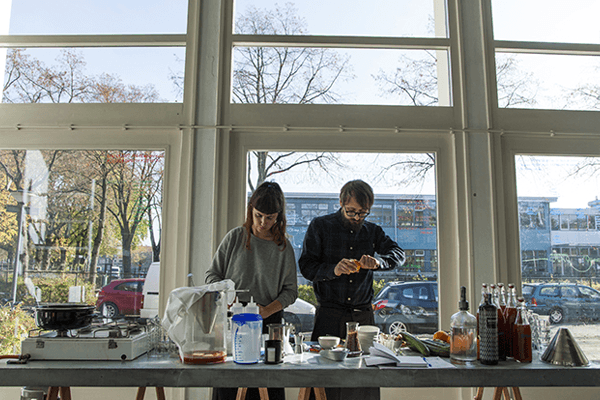 "Research theatre" for their project DIY Quinine
"Research theatre" for their project DIY Quinine
Regarding your views on society and technology, do you think the professional part of society, like businesses, governments and research institutes are too much result-oriented?
Mike: Possibly, yes. It's maybe related to "short-termism". Being so goal-driven, perhaps you do not look more expansively at other types of questions - is your question the only question? But we don’t want to make generalizations. That’s why we feel we should have a more open-ended investigation. Throughout a design process you find things out which you cannot predict in the beginning. We are just acknowledging that is what our process is and we’re quite protective of it, because we feel we need that freedom. That’s where the interesting stuff happens.
You look backward to move forward
What is the societal value of speculative design or design fiction? Which is also an area that you move in, right?
Mike: We don’t refer to ourselves as speculative designers, although of course we relate to it. It’s perspectives and tools are very much part of the way we work.
Susana: We’re not so much speculating, but reflecting on present situations. Mike hinted at the need for longer-term thinking and I think it’s maybe about rooting this long-term thinking in the present, as the future is happening right now. This allows change and critical reflection on ongoing processes and systems that we frequently interact with, through a more tangible engagement. Again it’s about creating space, critical space. More importantly, it allows you to not forget the past as you look backward to move forward.
How does your early work differ from your recent work?
Mike: It has become more multi-media and maybe even multi-modal.
Susana: I would say it’s also more explicitly experience driven. Many of the projects we have mentioned evolved by actually doing them and experiencing them for ourselves. We have the tendency to use ourselves as test cases in our work. In Aqua Vita we collected our own urine and used our bodies as research platforms. Possibly one of the biggest shifts is that our work is about gaining this first hand experience. In this way we don’t operate at a distance but we’re immersed in the context we’re working in.
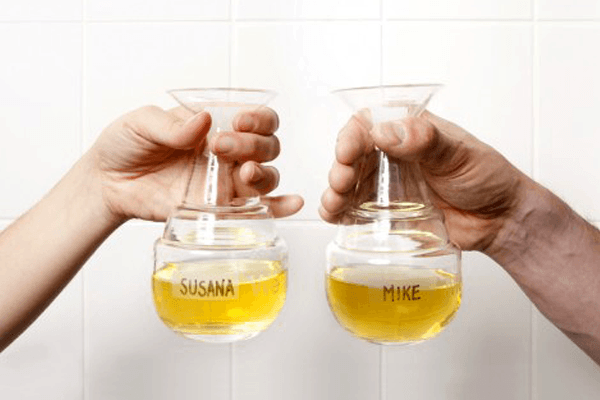 Urine vials from their project Aqua Vita
Urine vials from their project Aqua Vita
An important aspect of your work seems to be our senses and the way we combine them in experiencing something. Do you think our senses are equally saturated in the human living environment?
Susana: Saturated? That’s an interesting way of thinking about it.
Our senses have evolved over thousands of years within nature and they are attuned to the natural environment. But are our senses also in tune with the human made environment?
Mike: You could say there are different different degrees of saturation.
Susana: But there are also different degrees of perception of that saturation. We have made works with sound; we have created visually guided works, and we also works with smell. That’s the obvious sense to talk about, because smell is really an under-explored medium within design.
Mike: People find smell profound, but they don't genuinely feel connected to it as an experience. But we talk about smell as if it's an isolated experience, and that’s not how we experience things. It’s multi-sensorial. You don’t smell something detached from a sound or detached from the visual; they’re interrelated. And yet, we’ve been trained to gravitate towards the visible and audible. That’s something that is now starting to I don’t want to say shift, but there is certainly an acknowledgement that we’re not making the most of our senses. For example, within the Rhythm of Life project, we saw that we sense sound with our whole body, not only with our ears.
We’re not making the most of our senses
Susana: When you think about receptors, they are all over the body. We have bitter taste receptors in our gut, not only on our tongue for example. There is a plurality of sensations and they are all interrelated. I think there are different levels of saturation, because we tend to fragment the sensorial within the built environment.
Interviewer: Are there any trends at the moment in society, design, or science and technology that you find interesting?
Mike: I’m excited about a more open and inclusive approach to biotechnology, rather than any specific technology. Only when I can connect a technology to something else that we’re doing or thinking about, am I able to really grasp it’s potential. You could say I'm naturally skeptical until then.
Susana: Following the previous thread, the idea of moving away from fragmenting experience for example is very exciting, because we can engage with complementary feedback processes and hopefully begin to embrace difference for other ways of understanding, being, needing, etc.
Thank you so much, Mike and Susana, for sharing your work and viewpoints with us!
More interviews: Liam Young, Bruce Sterling, Jason Silva, Arne Hendriks, Rachel Armstrong, Alexandra Daisy Ginsberg, Floris Kaayk, Chloé Rutzerveld, Nadine Bongaerts.
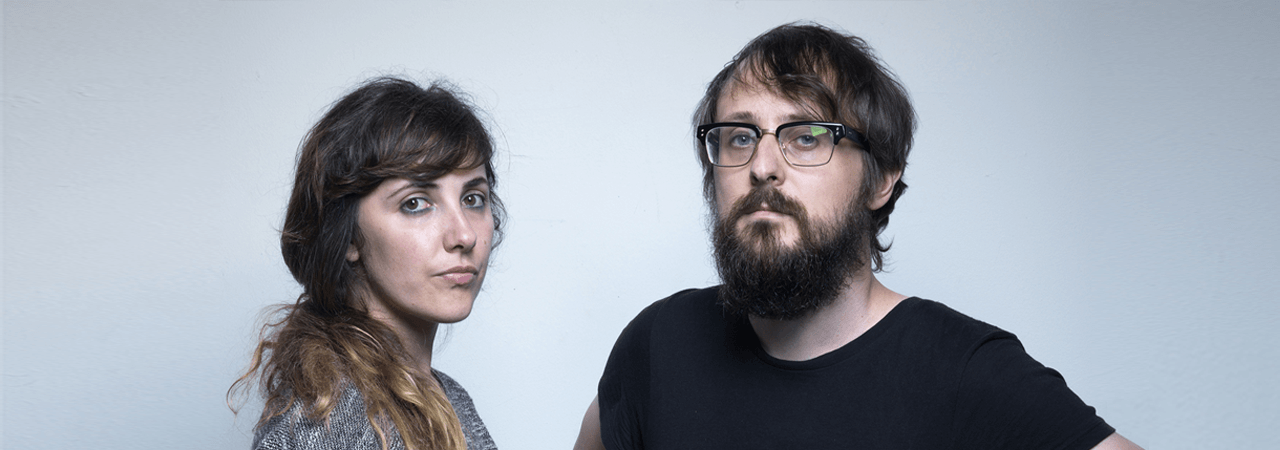
Share your thoughts and join the technology debate!
Be the first to comment